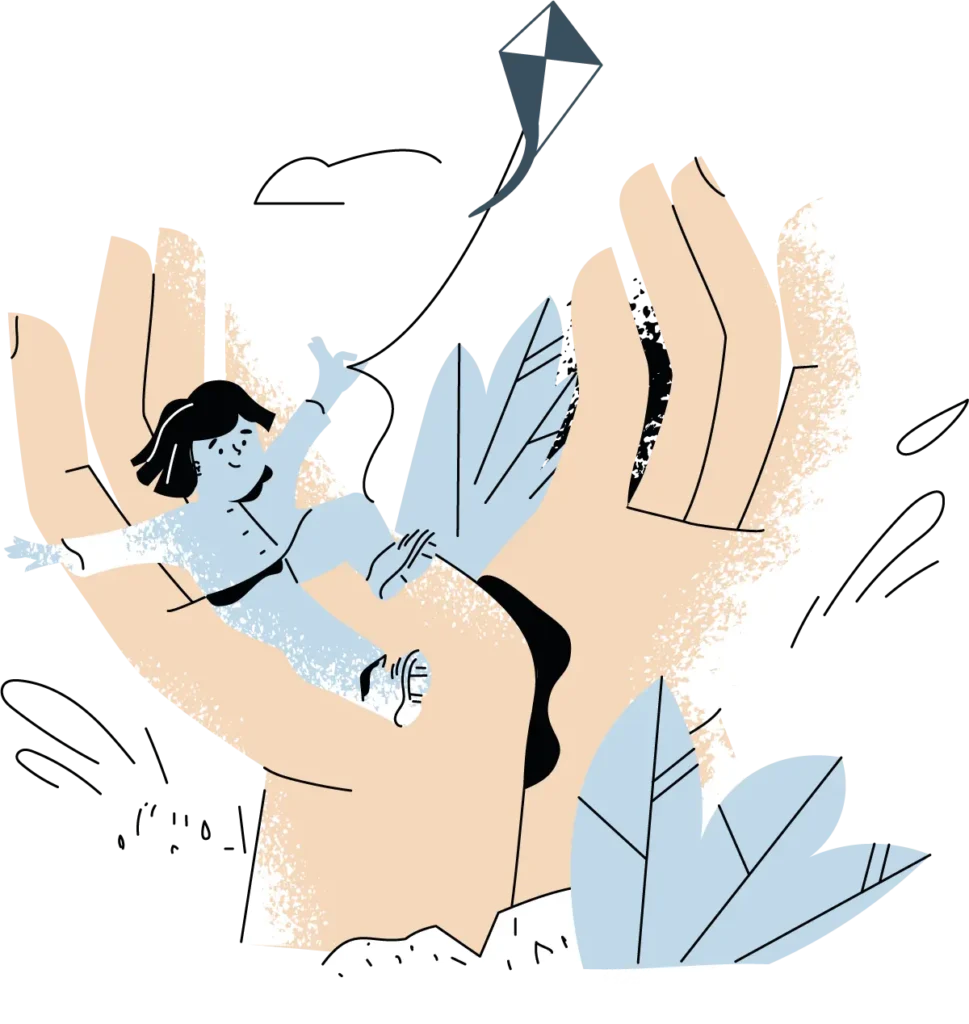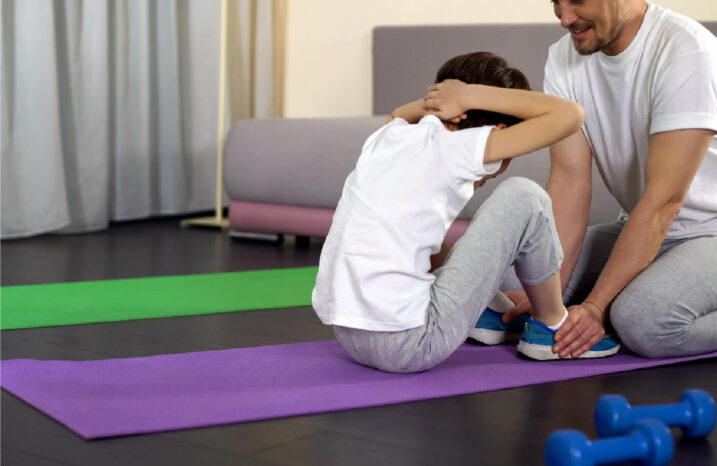This article was written with contributions from Joni Hjalmquist. She is a Pediatric Occupational Therapist.
What is Low Tone in Childhood?
Low tone in childhood refers to low muscle tone in any muscle group in the body.
Generally, the term low tone is used to describe core strength and stability. Kids with low tone tend to have issues with posture and athletic activities that require a solid and stable stance.
Children who struggle with muscle tone may be very flexible. They may sit in bendy, twisty, or hunched-over postures. They may appear floppy, have an interesting way of walking or running, and may look very thin.
Symptoms of Low Tone in Children
- Poor balance: a child who has challenges running or walking
- Poor posture: a child who has difficulty standing in an erect posture; may slouch, slump over, or sit in a folded position. Kids with poor posture may dislike ‘coming to the rug’ in the classroom to sit on the floor for storytime or instruction. They might find it difficult to sit that long and may flop over, roll around, or simply get up and walk away
- Thin and flexible: a child who looks very thin and can twist and move their body in unusual ways
- Uncoordinated: a child who runs into things or people
- Clumsy: a child who trips or falls a lot; the child may also drop things
- Athletic challenges: a child who struggles to participate in P.E. or sports for fear of getting hurt or being embarrassed over poor performance
- Bilateral coordination issues: a child who is unable to use both sides of their body effectively during a task
- Fine motor difficulties: a child who has difficulty stringing beads, tying shoes, or buttoning
Causes of Low Tone in Children
Lack of interest in motor activities: Some children simply do not like to play outside. A common reason for poor muscle tone is that the child simply does not move around a lot. It may be that the child prefers reading or intellectual activities over running around outside. A child may prefer video games over sports and may simply spend less time working on muscle-strengthening activities
Motor planning difficulty: Some children have some trouble with motor planning. If this is an issue for your child, you will notice they are not that coordinated. They may have trouble kicking a ball, running smoothly, or learning to ride a bike. Generally, this is not a huge issue so long as the child isn’t experiencing negative impacts socially or in terms of participation at school. If your child dreads P.E. or time on the playground, it is possible that they could use some help with this issue
Depth perception difficulty: Some children have difficulties judging the distance in space between themselves and other objects in the visual field. If your child struggles with depth perception, they may fall or run into things a lot
Cerebral palsy (CP): Children with CP have a disability of movement, balance, and posture, usually diagnosed at birth or in the first months of life. It is a fairly common motor diagnosis in childhood. CP is caused by challenges in brain function before or in the first year of life. Low birth weight and low muscle tone may occur with CP
Motor apraxia: Children with apraxia have physical challenges with gross motor movement. Those with difficulty in motor apraxia are likely to move in a forced or stilted manner, be less coordinated, and may lack muscle tone
Autism spectrum disorder: Children with autism have deficits in social communication and restricted interests or behaviors. A child with ASD may have low tone and have difficulties with coordination and balance. Some children with autism are fragile and appear to be a bit less stable and sturdy than their peers
What to Do About Low Tone in Children
Consider physical therapy and occupational therapy: Physical therapists and occupational therapists can be enormously helpful in working on your child’s muscle tone and coordination.
Physical therapy addresses gross motor movements, which are big movements like walking and running.
Occupational therapy addresses fine motor skills and control and sensory differences and needs. Sensory differences refer to being less or more sensitive to sensory stimuli like light, sound, touch, taste, smell, and movement.
Encourage activities: Help your child think about or try out activities such as martial arts, yoga, dance, swimming, or gymnastics. These sports might best be initiated at a beginner level with lots of individual support. Just as you can strengthen your core by doing exercise, your child can too. They may not be a stellar athlete but can build more confidence and strength with deliberate practice.
Let it go: Keep in mind that some children will not care as much about athletics, and this preference is okay. It may be that your child simply dislikes P.E. class and prefers to stay away from baseball. If they are finding a sense of belonging in academics, chess club, card clubs, or student council, the child may not need to worry about athletics. In this case, it will be important to ensure that your child is healthy physically and has good self-esteem.
Activities at home to work on motor coordination and muscle tone
Provided by Joni Hjalmquist, Physical Therapist and Occupational Therapist
- Lacing cards
- Ball activities (playing catch, throwing a ball up and catching, tossing against a wall and catching, standing in a line with multiple people and passing it over or under)
- Obstacle courses
- Shuffling and passing out cards
- Placing noodles or beads on a string
- Playing twister
When to Seek Help for Low Tone in Children
The main thing to look out for is, ‘does this problem get in the way of my child’s well-being and happiness?’ With muscle tone, this can go either way. Many kids are simply more intellectual and will avoid athletic and outdoor activities. Generally, that’s just fine so long as your child is healthy.
The time to be concerned is when your child’s muscle tone issues are preventing them from participating in daily life activities. Most Occupational and Physical Therapists work diligently to help kids develop enough skills to fully participate in activities in the community. This could mean that your child becomes completely terrified of P.E. class. It may be that your child refuses to go to recess. Or it could be that your child is suffering in terms of self-esteem due to challenges with athletics or play skills. In this case, help is available.
If your child is clumsy, and you find your child getting hurt more often than other children, it may be helpful to consult with your child’s pediatrician. Sometimes motor therapy can help your child build muscle tone and develop more coordination, balance, and stability.
If your child struggles with fine motor skills, you will notice they have trouble manipulating small objects such as buttons or zippers. However, the main sign of trouble in fine motor skills will appear in handwriting and drawing skills. For example, your child may hate it when the teacher asks them to draw a picture and then write a sentence about it. In that case, fine motor issues are likely the culprit. Again, it may help to consult with an occupational therapist either at school or in the community.
Professional Resources for Low Tone in Childhood
- Physical therapist: to assess and treat gross motor challenges, low strength and tone; to help with large muscle groups and movement
- Occupational therapist: to assess and treat fine motor skills and sensory integration needs
- Psychologist or neuropsychologist: to consider symptoms in a mental health context, conducting evaluations as necessary for related concerns with social or attention skills. Can treat or refer to appropriate treatments.
Similar Conditions to Low Tone in Childhood
- Motor coordination: those with low tone and poor core strength may have difficulty with smooth motor movements and coordination; sports may be tough
- Repetitive behaviors: those with low tone may be more likely to have repetitive behaviors like tapping, pacing, rocking, etc.
- Body space awareness: those with low tone may be less aware of their bodies in space and may bump into things more often or have trouble with assessing personal space
References on Low Tone Problems
Barton, Erin. Educating Young Children with Autism Spectrum Disorders.
Linder Ed.D., Toni & Petersen-Smith Ph.D., Ann (2008) Administration Guide for TPBA2 & TPBI2 (Play-Based Tpba, Tpbi, Tpbc). Paul H. Brookes, Inc.
Kroncke, Willard, & Huckabee (2016). Assessment of autism spectrum disorder: Critical issues in clinical forensic and school settings. Springer, San Francisco.
Trawick-Smith, Jeffrey (2013). Early childhood development: A multicultural perspective.


